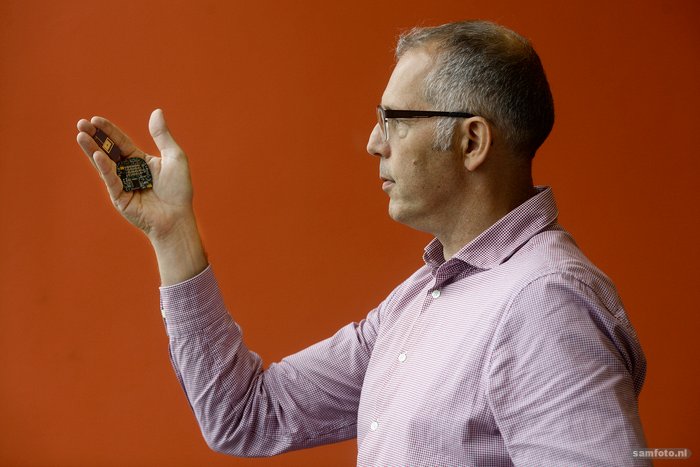Treating your disorder with electronic medicines
Increasing numbers of people now have a chip in their body which they can use to make payments or check in to public transport. “It sounds futuristic, but the technology is not that extraordinary”, explains Prof. Wouter Serdijn. “My dog has something similar.”
Serdijn knows what he’s talking about. As a professor in the faculty of Electrical Engineering, Mathematics and Computer Science, he works on the development of bioelectronic medicines. These tiny devices communicate with the nerves, muscles or heart and know exactly when the body needs something. A well-known example is the pacemaker, but bioelectronic medication is also used for such disorders as Parkinson’s disease, dystonia or epilepsy.
“Electronic medication can often be the last resort for patients for whom drugs won’t work or can no longer be used”, says Serdijn. He mentions treating tremors using deep-brain stimulation, which involves inserting an electrode array, a thin conducting wire, into the brain. This is connected to an electronic impulse generator (IPG) via a subcutaneous extension cable. Implanted just under the collarbone, the IPG emits pulses that are sent to the brain to keep tremors under control. The doctor sets the speed, duration and strength of the pulses, although patients may also control some of the settings.
“It sounds extreme, because it means you’re tampering with the part of the body that regulates motor skills and it's also where someone’s personality and thoughts are located. It’s a risky operation, but can often make a huge difference”, explains Serdijn. “It’s extraordinary to see someone who shakes all the time suddenly become still and be able to pick up things when the simulator switches on.”
The same technology is used for patients with balance disorders, such as Menière’s disease, or to enable deaf people to hear again via cochlear implants. The future looks very promising. “I’m currently working with the Netherlands Institute for Neuroscience on a stimulation technique to enable blind people to see in high resolution and I expect bioelectronic medicines to bring about significant progress in the treatment of migraine and depression.”
Serdijn's ultimate dream is to give people complete control over uncontrollable urges that are at odds with their personality. “Brain-related disorders can cause a lot of suffering. People often say: ‘It’s all in your head’. They’re right, but this is not a question of free choice. Take addictions, for example. People used to blame them on a lack of willpower, but it’s the brain that says to someone: ‘You see that bottle there? I want it. I need it.’ The patient is a victim of an uncontrollable urge to use substances that are not good for him or her.”
More info? bioelectronics.tudelft.nl
